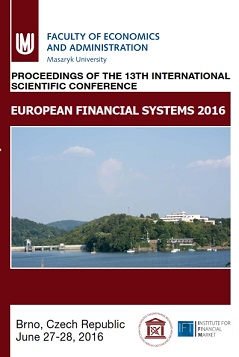Keynesian Model in Small and Medium Enterprises Development: Puzzling Case of Russian Regions
Keynesian Model in Small and Medium Enterprises Development: Puzzling Case of Russian Regions
Author(s): Maria Ginzburg, Nadezhda Yashina, Elena Ivanova
Subject(s): National Economy, Business Economy / Management, Micro-Economics, Economic policy, Methodology and research technology, Economic development
Published by: Masarykova univerzita nakladatelství
Keywords: Keynesian model; small and medium enterprises; Russian regions; economic development; economic policy;
Summary/Abstract: This study explores the potential effects of Keynesian demand stimulation for small and medium-size businesses in Russian regions. The authors tested the following hypotheses: (1) is there a connection between small and medium-size business development in any given region of Russia and regional output (Gross Regional Product – GRP); (2) the higher the share of electric power consumption in GRP of a given region, the more regional product is created in this region and the higher the share of this regional product can be redistributed by means of small businesses. To test these hypotheses, the authors developed three indices related to the development of small and medium-size enterprises and the GRP, produced in the provinces of the Russian Federation. One index (SMEDI) summarizes the level of development of small and medium-size businesses in a region; another (GRPI) – the level of Gross Regional Product, produced in a given region; and finally (EPCI) - the level of electric power consumption in the GRP of a corresponding region. Correlation analysis was used to analyze data for 83 federal subjects of the Russian Federation for 2010-2014. The results indicate a moderate relationship between SMEDI and GRPI, and no relationship between SMEDI and EPCI. We conclude that the level of development of SMEs in the regions of Russia in 2010-2014 depends on the level of GRP to a certain degree. The level of development of SMEs is directly proportional to increases in GRP. But Keynesian model of demand stimulation, if applied to the Russian economy, stumbles upon the problems of fiscal federalism and the excessive centralization of economic governance, and this fact does not create effective stimulus for economic growth and small business development in Russia.
Book: European Financial systems 2016. Proceedings of the 13th International Scientific Conference
- Page Range: 183-190
- Page Count: 8
- Publication Year: 2016
- Language: English
- Content File-PDF

